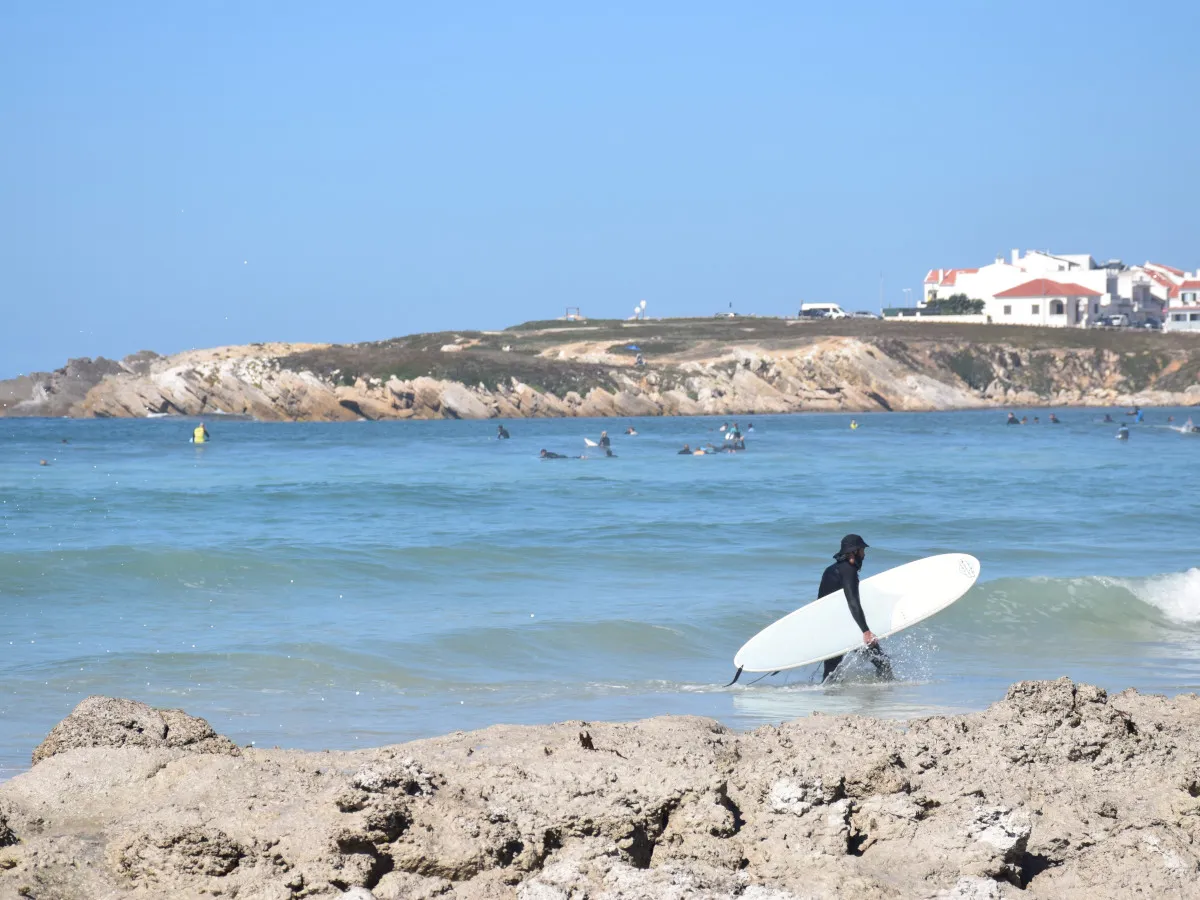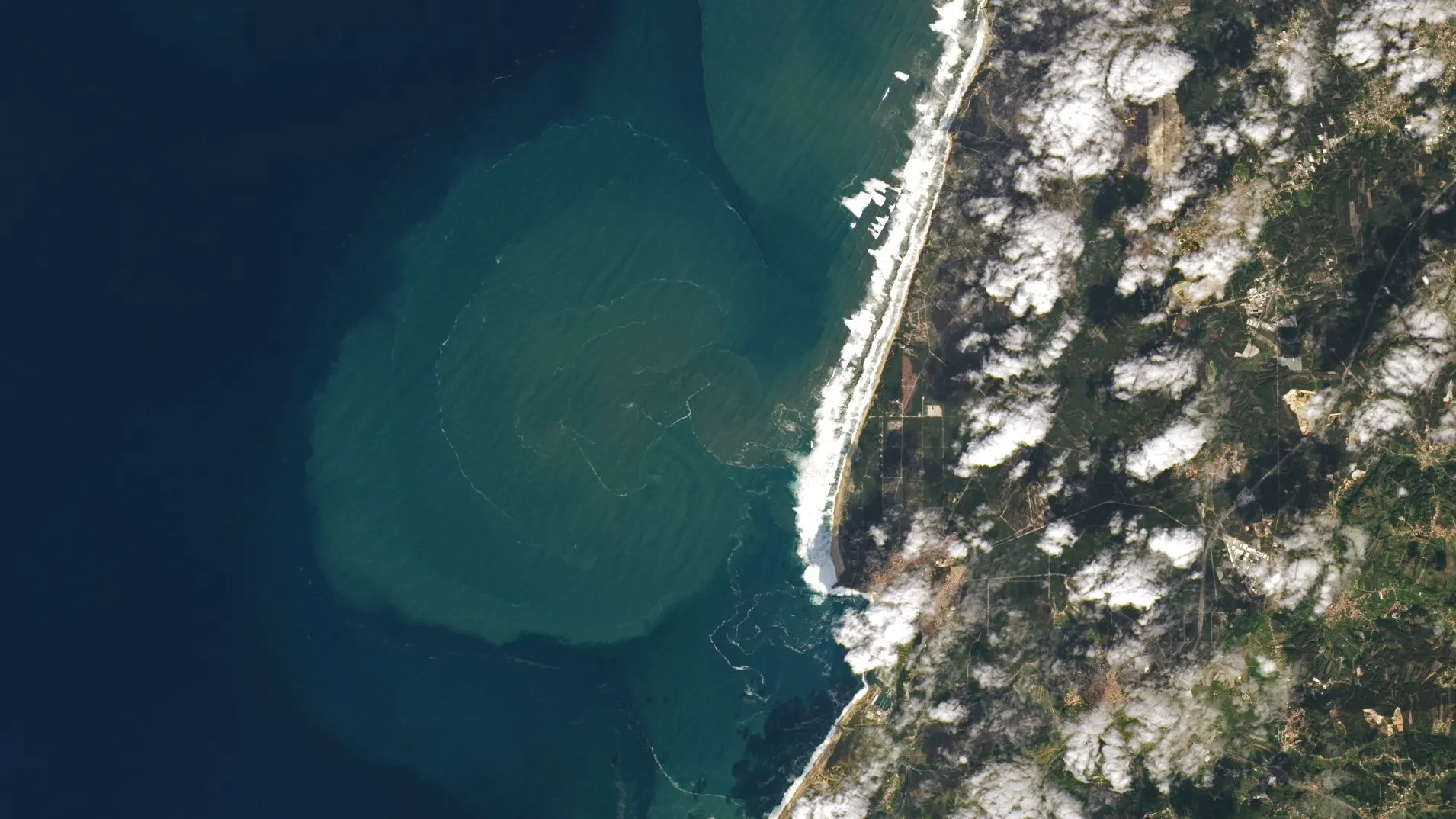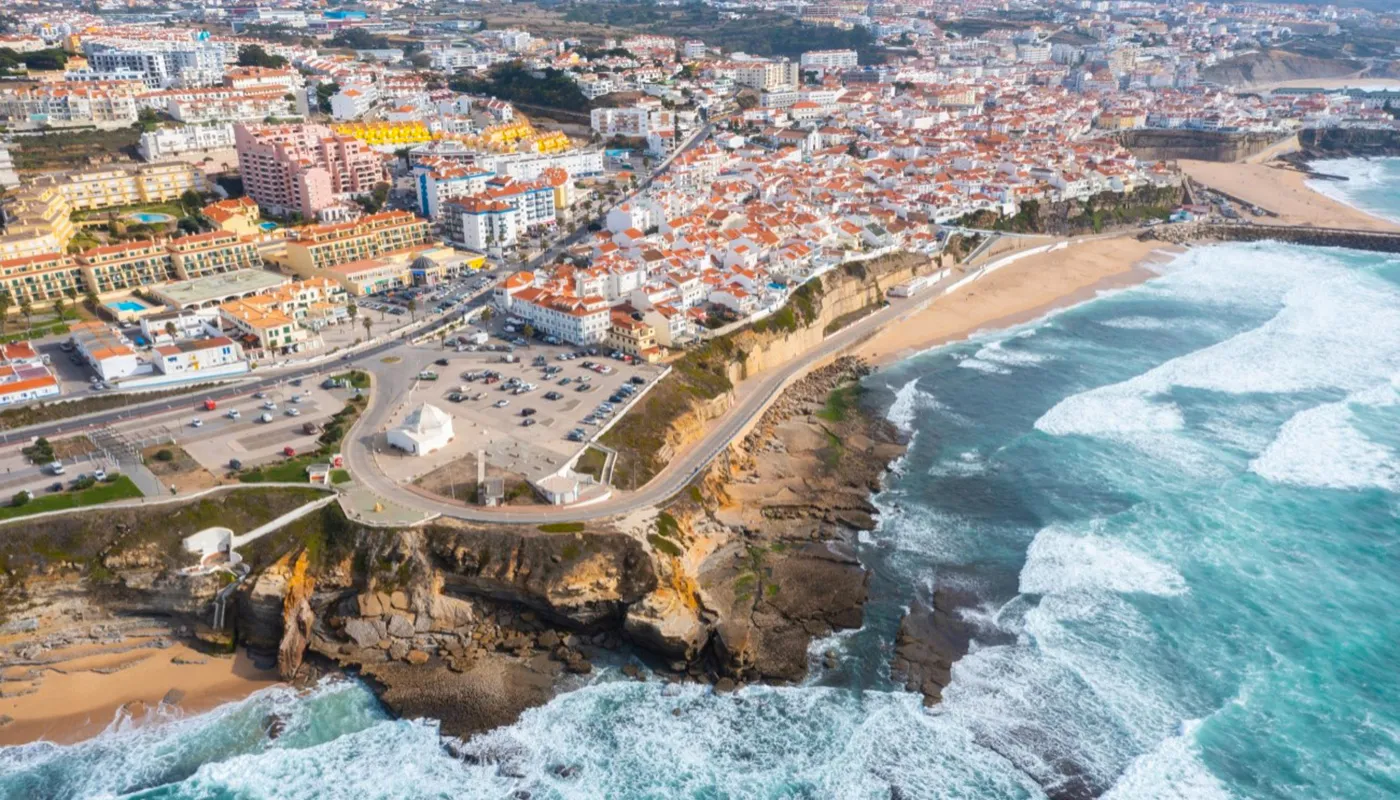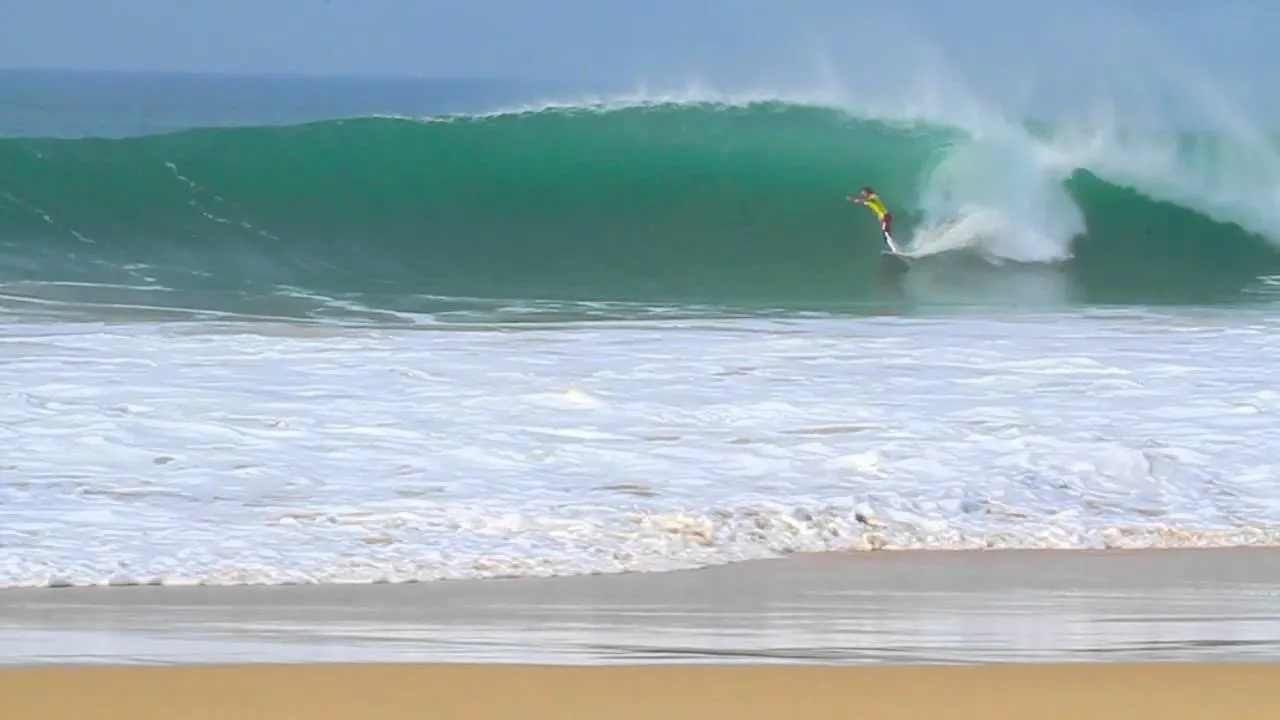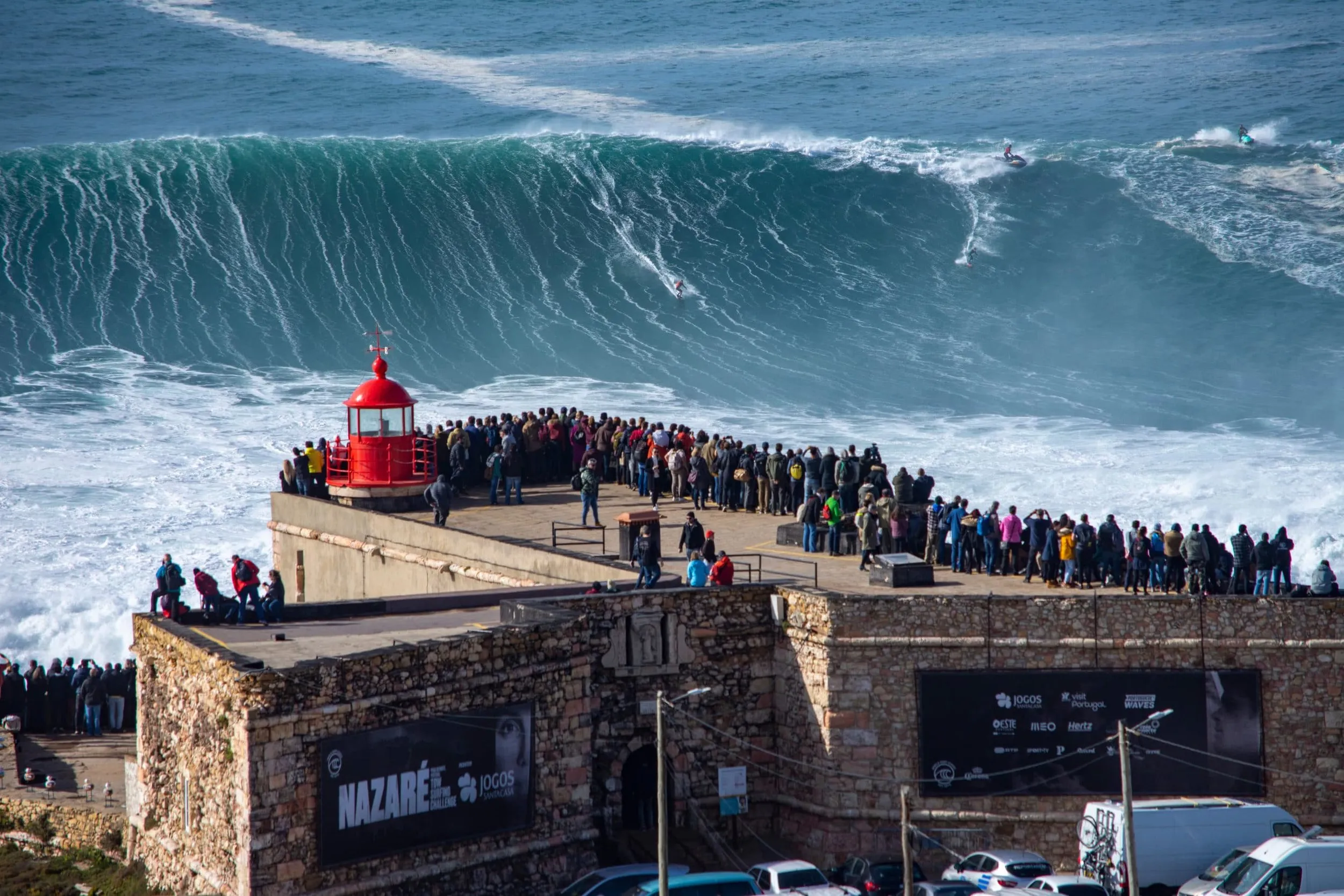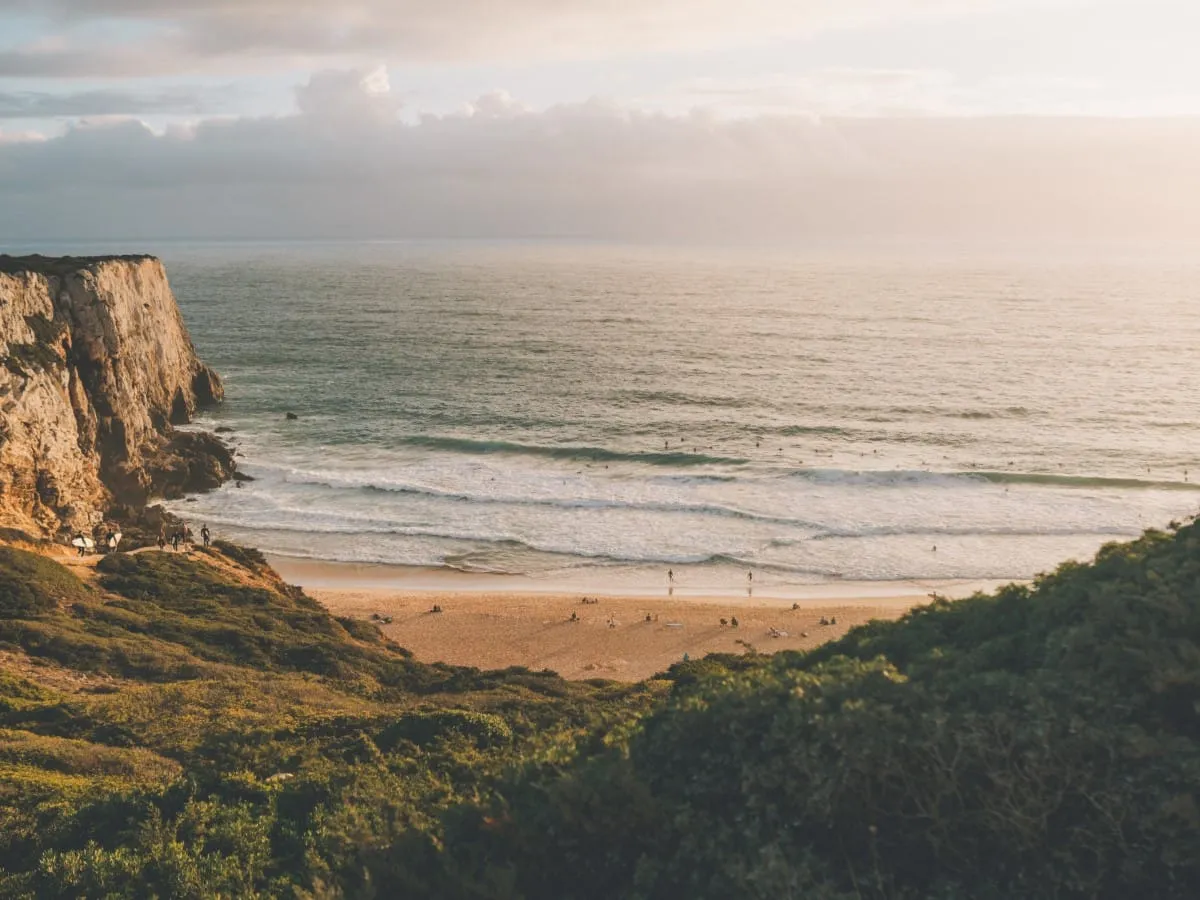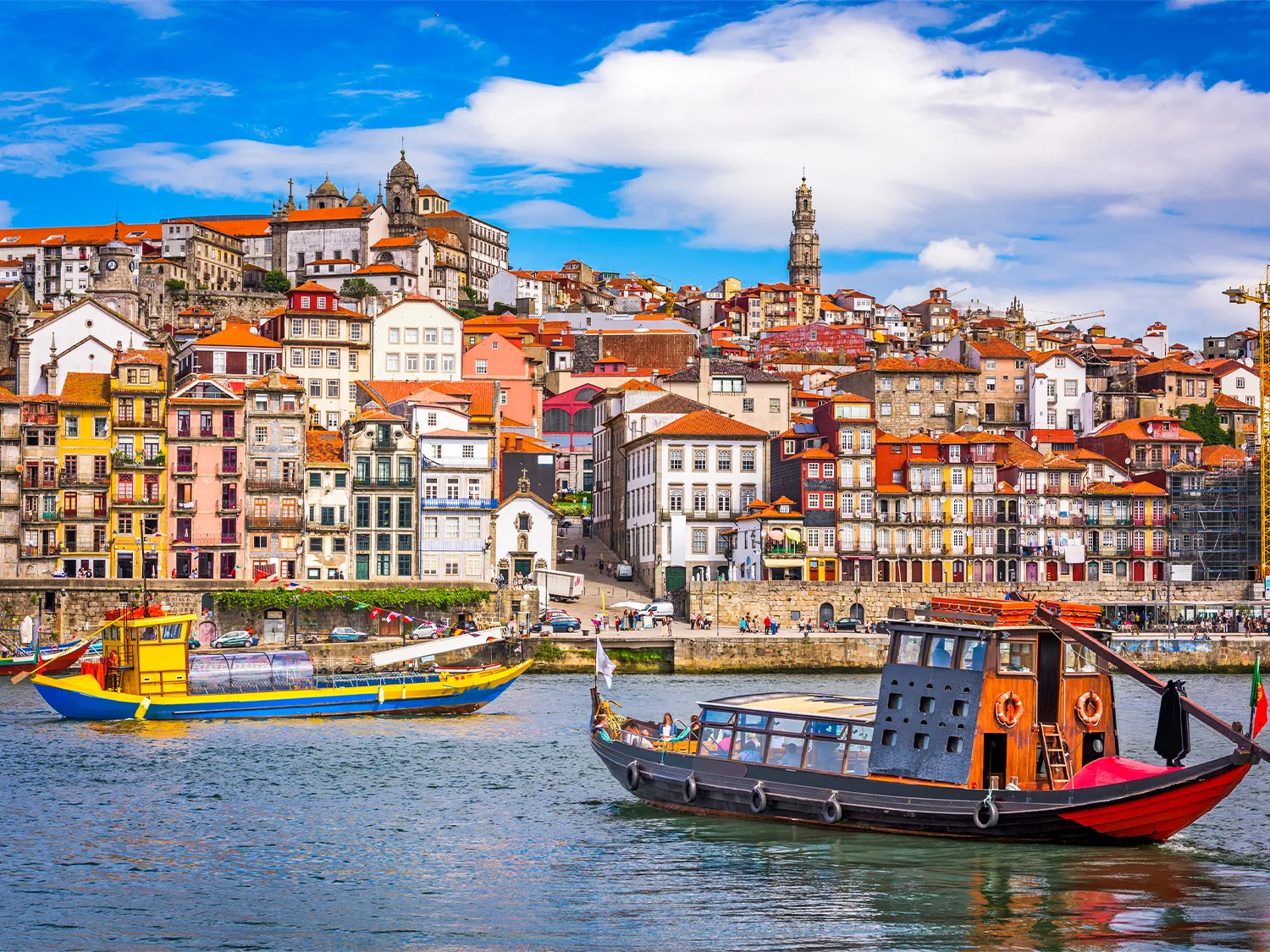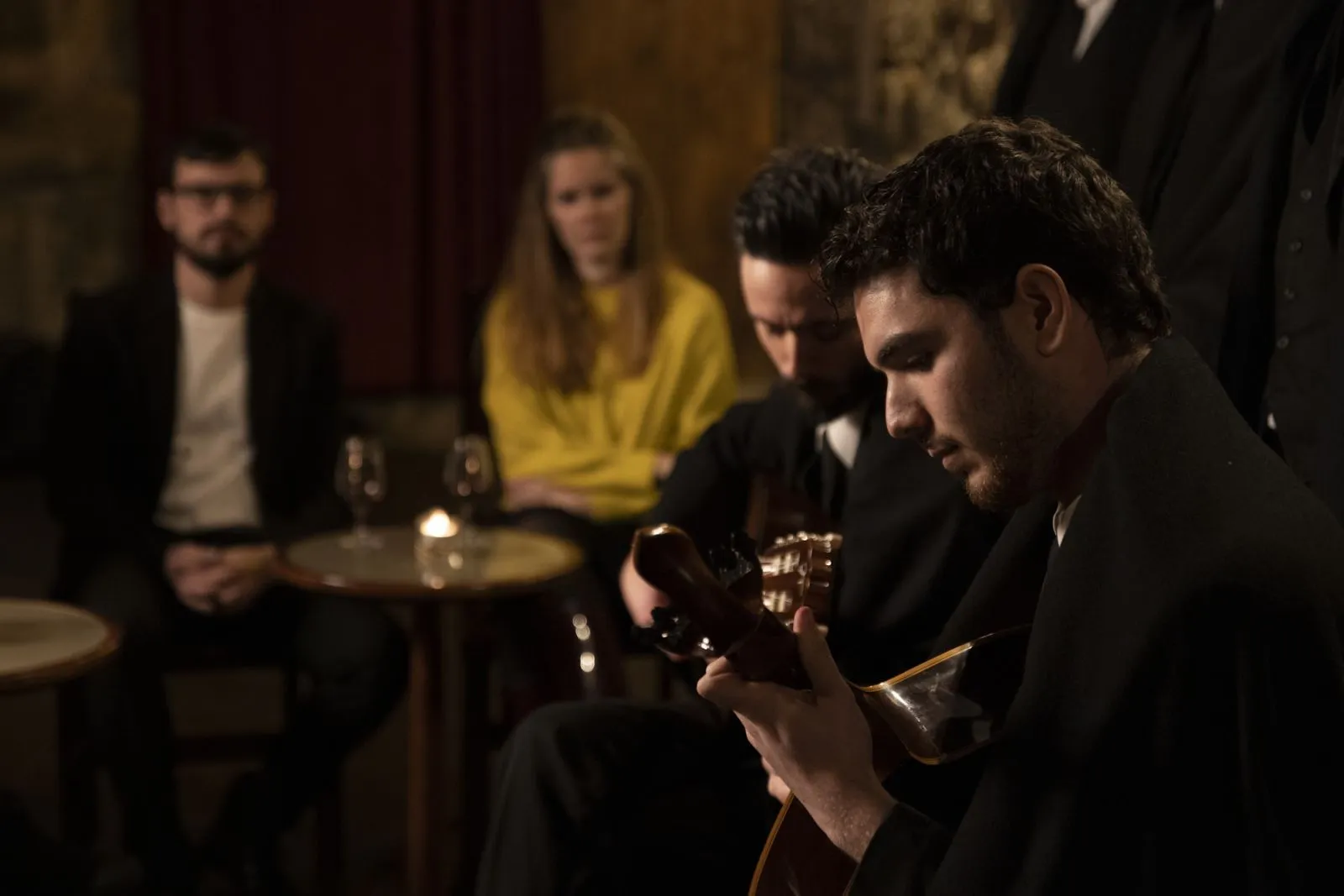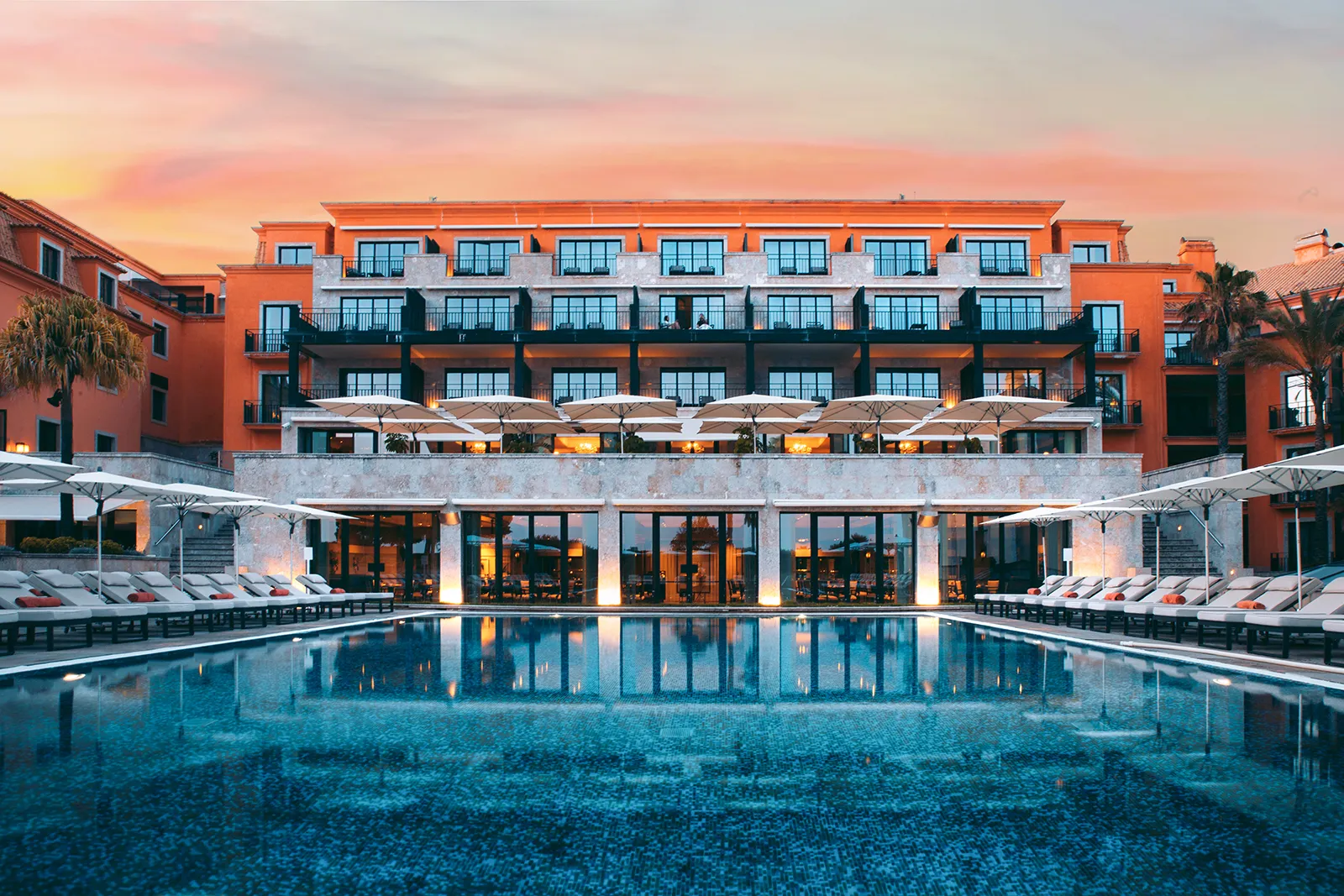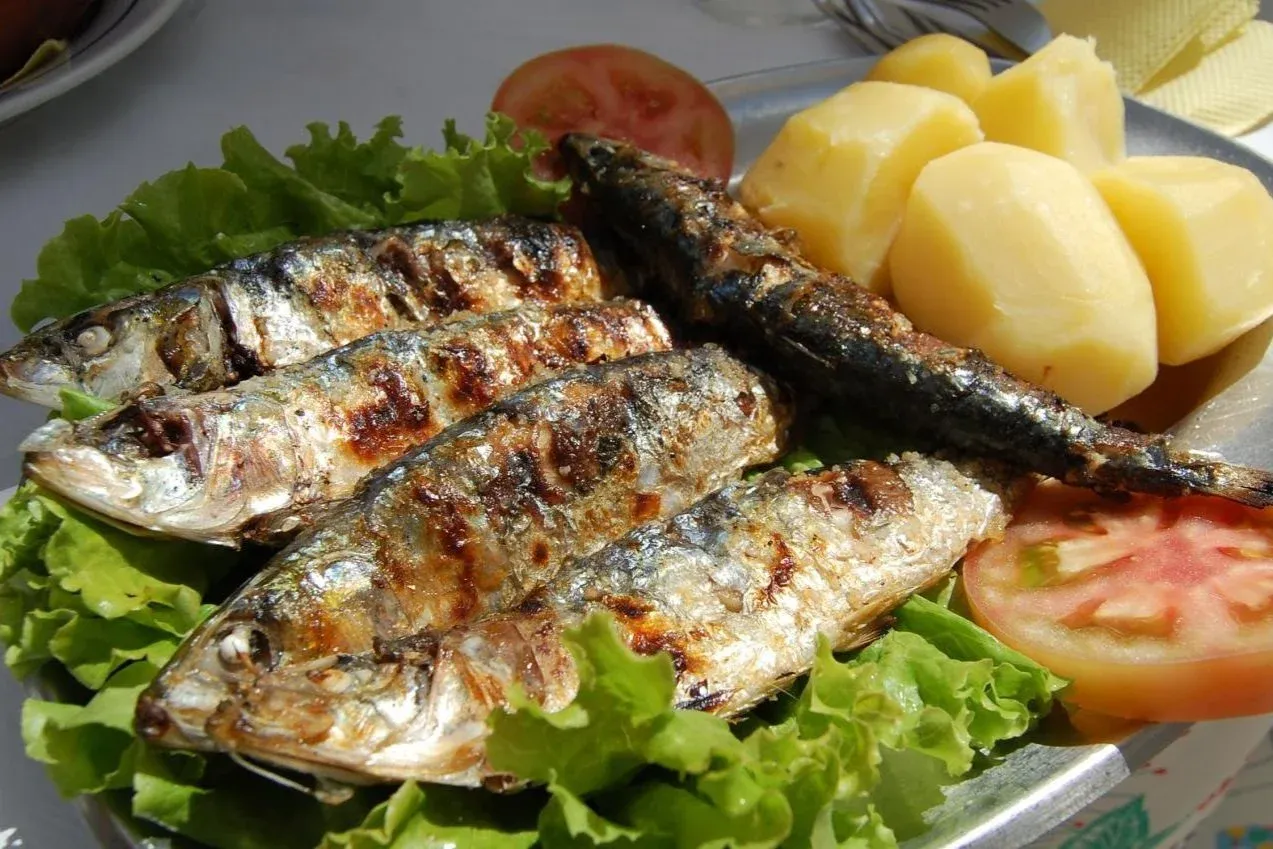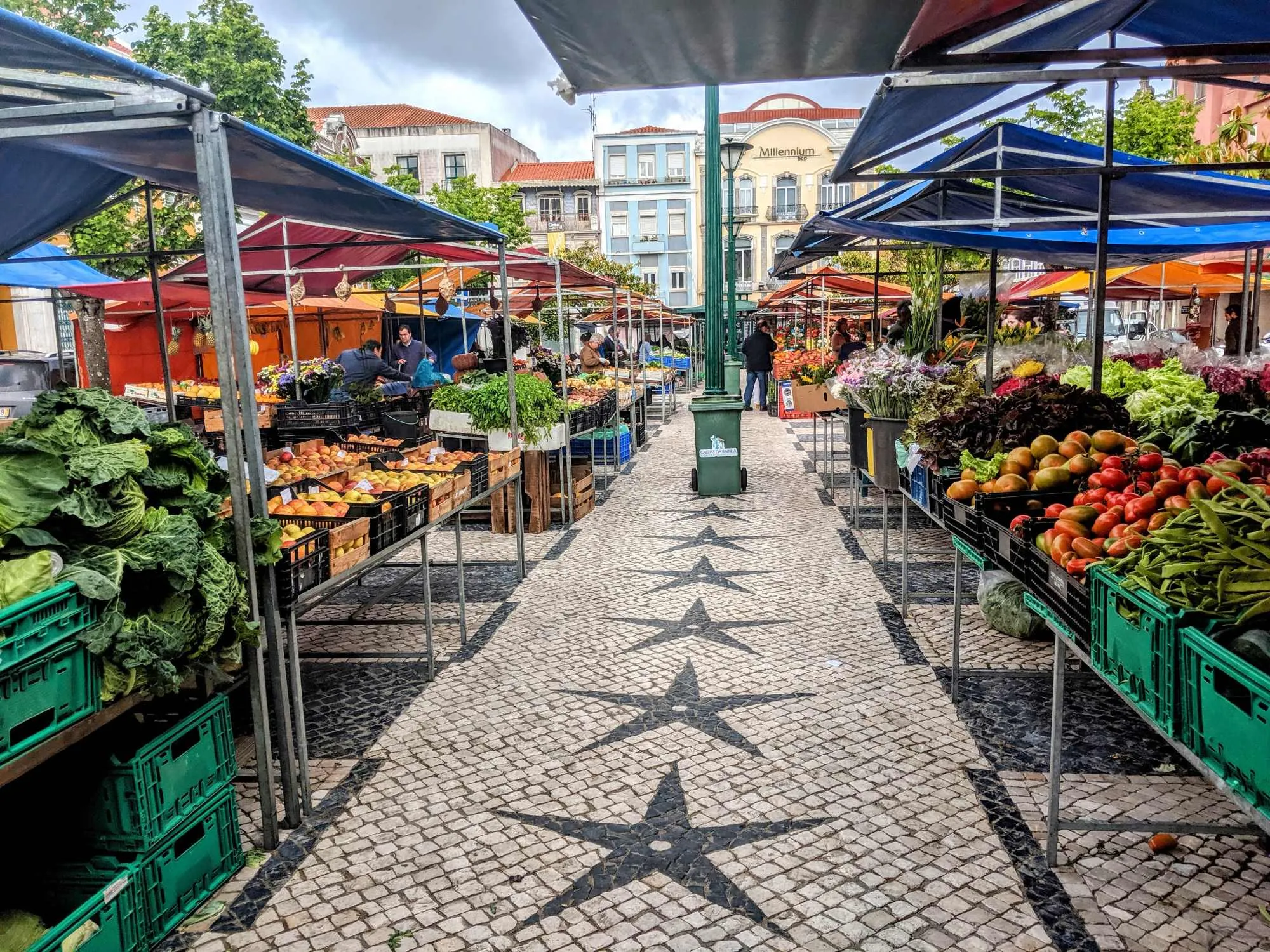Picture this: you’re paddling out at sunset along Portugal’s stunning 1,793 km coastline, where the Atlantic delivers consistent swells to ancient cliffs and golden beaches year-round. After a decade of making Portugal my go-to surf pilgrimage and camper-vanning the entire coast—from the mellow peelers of the south to the rugged, empty breaks of the north—I can tell you this isn’t just hype. The experience of Portugal surfing offers American travelers an unbeatable combination of world-class waves, affordable prices, warm culture, and incredible variety that you simply won’t find anywhere else in Europe.
Why Portugal is a World-Class Surfing Destination
Here’s the thing about a surf trip to Portugal—it’s not just another European destination. I’ve surfed all over the world, but there’s something special about this place that keeps drawing me back.
A Wave Magnet: Portugal’s Unique Geography
Portugal’s position as Europe’s westernmost point isn’t just a fun fact; it’s a wave-catching superpower. That short continental shelf and complete Atlantic exposure mean this coastline acts like a massive wave magnet. While other European spots go flat for weeks (especially in summer), Portugal almost always has something surfable somewhere along its epic coast.
I’ve witnessed this firsthand countless times. Within a single trip, you can check out the record-breaking monsters at Nazaré, learn to surf on gentle Algarve rollers, score world-class point breaks in Ericeira, get barreled on hollow central coast reefs, or cruise forgiving beach breaks near Peniche. The variety is absolutely mind-blowing.
Affordable Adventure: Your Dollar Goes Further
Portugal remains one of Western Europe’s most affordable countries, which means your surf trip budget stretches way further. I’m talking longer stays, quality surf lessons without breaking the bank, and incredible dining experiences that would cost double elsewhere. Plus, the cultural experience—from that magical Portuguese light to the warmest, most welcoming people you’ll meet—makes this so much more than just a wave-hunting mission.
The Thrill of Discovery
What really sets Portuguese surfing apart is the potential for discovery. Sure, there are famous, busy spots, but that massive coastline means adventure is always just around the next headland. I can’t tell you how many times I’ve found my own slice of paradise just by following a dirt track between towns.
One traveling surfer perfectly captured this feeling: “Coming from the crowded breaks of Southern France and Northern Spain, we were stoked to find some off-the-beaten-path locations that were wave-rich and crowd-free… I’ll admit, there were a few spots on the Portugal coast that were a bit too rocky and empty for me to brave, but there were a lot of great surfing spots in Portugal that were perfect for us ‘intermediate’ surfers.”
The Best Time for a Portugal Surfing Trip
After years of surfing Portugal in every season, I’ve learned that timing is absolutely everything. The ‘best’ time completely depends on what you’re after.
Summer (June-August): A Beginner’s Dream
- What to expect: Smaller, gentler waves averaging 1-5 feet with the warmest water temperatures (65-71°F). This is when the Atlantic chills out and becomes super forgiving.
- Perfect for: First-timers and early intermediates who want to learn the basics without getting hammered by big waves. Surf schools are buzzing, and the vibe is relaxed and social.
- The reality check: Summer is peak tourist season, so popular spots near Lisbon and in the Algarve get packed. The strong northerly Nortada winds can also turn west coast spots into washing machines. As one Reddit surfer put it: “The problem in August is having any kind of waves. Normally it’s super flat. You need some luck, but further north bigger chances of getting some waves.”
- My tip: If you’re traveling mid-summer, head north to more exposed regions or keep your itinerary flexible to chase the waves.
Autumn (September-November): The Golden Season
- Why I love it: Ask any seasoned Portugal surfer when to visit, and we’ll all say autumn. This is when the first powerful North Atlantic swells start rolling in, but they’re met with leftover summer calm and offshore winds. The ocean is still warm, days are long and sunny, and the swells are clean and organized.
- Perfect for: Intermediate to advanced surfers seeking consistent, powerful waves. Nearly every spot in the country is firing. Beginners can still have a blast by sticking to sheltered beach breaks.
- The vibe: Summer crowds have cleared out, so you get that relaxed, spacious feeling both in the lineup and around town. This is when Europeans on holiday show up for serious surfing.
Winter (December-February): The Hardcore Season
- The raw truth: Winter is when the North Atlantic goes absolutely mental with virtually non-stop swells. This is serious business—water drops to 57-61°F, requiring thick wetsuits plus hoods, booties, and gloves.
- Strictly for: Experienced and expert surfers only. Many famous breaks become too big, dangerous, or completely washed out. The game becomes hunting for sheltered spots like south-facing Algarve beaches or protected Cascais bays.
- The reward: Empty lineups populated only by hardy locals and traveling experts. When conditions align—a massive swell with a brief clean wind window—you can score the waves of a lifetime.
Spring (March-May): The Sweet Spot
- What I’ve found: Spring blends winter’s power with improving weather. You can still find solid swells, but winter’s fierce storms have backed off. The weather improves, days get longer, and the water slowly warms up.
- Great for: All levels. This is often the best time for exploring Northern Portugal’s Porto region, which can be too stormy in winter.
Top Portugal Surf Regions: A Breakdown
Central Coast: The Beating Heart of Portuguese Surfing
This stretch between Lisbon and Figueira da Foz is where Portugal’s surf scene truly comes alive. I’ve spent countless sessions here, and the concentration of world-class waves is just staggering.
Ericeira: Europe’s Surf Crown Jewel
Let me be straight with you: saying “surfing in Portugal is surfing in Ericeira” isn’t an exaggeration. This place is the cultural and spiritual capital of Portuguese surfing and has been Europe’s only World Surfing Reserve since 2011.
The town itself perfectly blends traditional Portuguese charm with a vibrant international surf community. Those whitewashed houses and cobblestone streets create an amazing backdrop for your surf adventure.
- For beginners: Head south of town to your safe havens. Foz do Lizandro is absolutely stunning—a super consistent beach break with a sandy bottom and multiple peaks perfect for lessons. São Julião is another gem; this large beach acts as a swell magnet, often having waves when other spots are smaller.
- For intermediates: Ribeira d’Ilhas is your main stage. This is one of Europe’s most famous waves—an incredibly consistent, long right-hand point break that peels perfectly down the line. Think Australia’s Bells Beach quality. Fair warning: fame brings crowds, especially on good days.
- For experts: This is where Ericeira earns its legendary status. The northern reserve section serves up a gauntlet of powerful reef breaks. Coxos ranks as one of Europe’s best and most powerful right-hand reef breaks, delivering fast, hollow, perfect barrels over a shallow reef. Even more intense is Cave—a terrifying right-hand slab breaking over razor-sharp reef right against a rock cliff. Pros and highly experienced surfers only.
One traveler nailed the Ericeira experience: “My favorite town in Portugal has earned its reputation as one of the top surf destinations in Europe, and for good reason… Ribeira d’Ilhas is both a beautiful beach and one of the most famous surf spots… It is busy here pretty much all year, so I often had trouble finding parking, especially in the afternoon.” Pro tip right there—get to the popular spots early!
Peniche: The Wave Machine That Never Stops
Peniche offers a completely different energy than polished Ericeira. This gritty, authentic fishing town sits on a peninsula that juts into the Atlantic, creating beaches that face multiple directions. The superpower here is that when wind makes one side messy, it’s almost guaranteed to be clean on the other. This makes Peniche one of the world’s most consistent surf zones.
- Supertubos (The “European Pipeline”): This is Peniche’s crown jewel—a world-class, hollow, incredibly powerful beach break that hosts the MEO Rip Curl Pro Portugal WSL Championship Tour event. It breaks in very shallow water over sand, creating intensely round, powerful barrels. Advanced and expert surfers only.
- Baleal & Cantinho da Baia: Here’s the flip side that makes Peniche so complete. This long bay connecting the mainland to Baleal island faces north and stays protected from large westerly swells, offering smaller, manageable waves perfect for learning. Surf schools can almost always find a safe, fun spot for lessons here.
A Reddit beginner perfectly captured the Baleal experience: “Just got back from an awesome trip there! We’re beginners too… Would definitely recommend going to Baleal beach 15min taxi from Peniche, loads of cheap surf rental… Waves are big but they were much more beginner friendly and the beach was big enough that crowds weren’t an issue.”
Nazaré: Where Giants Come to Play
Nazaré’s transformation from a quiet fishing village to a global big-wave epicenter is pure geological magic. The Nazaré Canyon—one of Europe’s largest underwater canyons, reaching 16,000 feet deep—funnels and amplifies Atlantic swells, creating the biggest rideable waves on the planet.
For 99.9% of us, Nazaré is a breathtaking spectator sport. The prime viewing spot is the iconic red lighthouse at the Fort of São Miguel Arcanjo, offering dramatic views of giant waves breaking below. The big wave season runs from October through April.
While Praia do Norte is strictly for elite tow-in surfers, Praia do Nazaré (the main town beach) offers powerful, often heavy beach break waves for experienced surfers, especially during summer when the giants are sleeping.
The Algarve: Sun, Sand, and Waves for Every Wind Direction
Portugal’s sun-drenched southern coast combines stunning golden beaches, dramatic ochre cliffs, and the country’s warmest water with a more relaxed holiday vibe. After exploring both coasts extensively, I can tell you the key to unlocking the Algarve’s surf potential is understanding its dual-coast setup.
- West Coast Strategy: The rugged west coast around Aljezur and Vila do Bispo faces full Atlantic exposure with consistent, powerful swells year-round. Praia do Amado is incredibly consistent—a wide, sandy beach break that’s become a surf school hub for all levels. Further north, Arrifana offers breathtaking scenery in a cliff-backed bay with slight protection from large swells and north winds.
- South Coast Magic: The south coast from Sagres to Lagos stays largely sheltered, only coming alive during winter when massive northwest swells wrap around the Sagres headland. This creates a fantastic dynamic: when the west coast is too big or blown out, the south coast offers smaller, perfectly clean offshore waves.
Sagres: The Algarve’s Surf Epicenter
Perched on Europe’s southwesternmost tip, Sagres was once called “the end of the world.” For surfers, it feels like the beginning of something special. Tonel Beach, right next to town, is the most consistent and popular break—a fun beach break working on most swells. Around the corner, Praia da Mareta is the most sheltered beach, offering a safe haven that only breaks on the biggest winter swells.
One Reddit user summed up the Sagres vibe perfectly: “Sagres is arguably my favourite surf town in the world… Definitely give it a go, and enjoy.” That enthusiasm is backed up by learning experiences: “Great place to learn to surf! The surf lessons were very fun! My friend and I were complete beginners but had a great time, the instructor gave a lot of individualized attention as needed.”
Lisbon and Porto: Urban Surf Adventures
For those who want both European city culture and surf sessions, the coastal areas around Portugal’s major cities deliver the perfect blend.
- Lisbon Coast: Easy train or car rides get you to quality breaks. Carcavelos stands out as a high-quality, powerful beach break known for excellent barrels, though its proximity to the city makes it one of the country’s most crowded spots. Near chic Cascais, Praia do Guincho offers a beautiful, expansive beach great for summer beginners, though wind exposure often makes it better for kitesurfers.
- Porto and the North: The “Green Coast” offers a distinctly different experience—colder water, a more rugged coastline, and way thinner crowds. Matosinhos provides easy urban surf access via metro—a long sandy beach with harbor wall protection creating mellow, beginner-friendly waves and numerous surf schools.
How to Plan Your Portugal Surf Trip from the USA
After planning countless trips and helping friends organize their Portuguese surf adventures, here’s your complete roadmap.
Flights to Portugal
- Main Airports: Your entry point depends on your surf region focus. Lisbon (LIS) is the largest and most central for Ericeira, Peniche, and Lisbon coast access. Faro (FAO) serves the Algarve perfectly. Porto (OPO) gets you to the rugged northern coast.
- From the US: Portugal connects well with direct or easy one-stop flights from major hubs like New York, Boston, Miami, Chicago, and San Francisco. TAP Air Portugal offers the most direct routes, while United and others also service these routes.
- Budget Reality: Plan on $425-$600 round-trip economy from the East Coast and $550-$750 from the West Coast, depending on the season and how far in advance you book.
Getting Around: Renting a Car is Essential
Here’s my most critical piece of advice: rent a car, no exceptions. Public transport connects cities fine but won’t get you to the best surf breaks down rural roads. A car gives you the freedom to chase optimal wind and swell conditions, escape the crowds at main spots, and discover those hidden gems that make a trip truly memorable. Book well ahead, especially for the high season (summer and autumn).
Accommodation: Surf Camps, Hostels, and Hotels
- Surf Camps: The ultimate hassle-free option, especially for beginners or solo travelers. Packages typically include accommodation, daily lessons, equipment, some meals, and beach transportation. Examples include Rapture in Ericeira, Peniche Surf Camp, and Algarve Surf School in Sagres.
- Surf Hostels: Perfect for budget-conscious, social travelers who may not need daily lessons. They offer affordable dorms and private rooms and are fantastic for meeting other surfers.
- Hotels and Airbnbs: Ideal for families, couples, or groups wanting more comfort, privacy, and independence.
Sample One-Week Budget for Your Surf Trip
Based on my experience, here’s what to expect for a one-week Portugal surf trip (per person, USD):
- Budget Traveler (Hostel/DIY):
- Flight: $500
- Accommodation (7 nights): $210
- Car rental (split): $175
- Food and drink: $280
- Surf gear/lessons: $150
- Miscellaneous: $100
- Total: ~$1,415
- Comfort Traveler (Surf Camp/Hotel):
- Flight: $500
- Accommodation/Camp (7 nights): $700
- Car rental: $280
- Food and drink: $490
- Lessons/Gear: $450
- Miscellaneous: $200
- Total: ~$2,620
Embracing the Local Culture and Surf Etiquette
A truly memorable trip goes way beyond just the waves—it’s about cultural immersion and respect in the water.
Cultural Immersion Beyond the Waves
Don’t just be a surfer; be a traveler. Take time between sessions to wander the fairy-tale castles of Sintra, stop at family-run seaside tascas for fresh-grilled fish, and never say no to a warm Pastel de Nata from a local bakery—the perfect post-surf treat.
Surf Etiquette in Portugal
Universal surf etiquette rules are crucial in Portugal’s often-crowded lineups. The fundamental rule: the surfer closest to the peak has priority. Always look both ways before taking off to avoid dropping in on someone.
When paddling out, paddle wide through channels or whitewater to avoid interfering with those riding waves. While locals are famously welcoming, popular spots like Carcavelos and Ribeira d’Ilhas can be competitive. Show respect, be patient, wait your turn, and a simple smile or nod goes a long way.
Meet the Legends
Understanding local surf culture means knowing the heroes who shaped it. Tiago “Saca” Pires was the first Portuguese surfer on the elite World Championship Tour. Today, Frederico “Kikas” Morais represents Portugal on the world stage. In the big wave arena, Nic Von Rupp ranks among the world’s most respected chargers, frequently tackling Nazaré’s giants.
The experience of Portugal surfing delivers an adventure as diverse as it is profound—incredible waves, rich culture, and stunning beauty. It creates that magical feeling of sharing perfect waves with friends as the sun sets over ancient cliffs and tasting fresh seafood after long sessions in the water. This guide should give you everything you need to plan your trip. So check the forecast, book that ticket, and get ready for your share of the stoke—trust me, you won’t regret it.
Read more:
